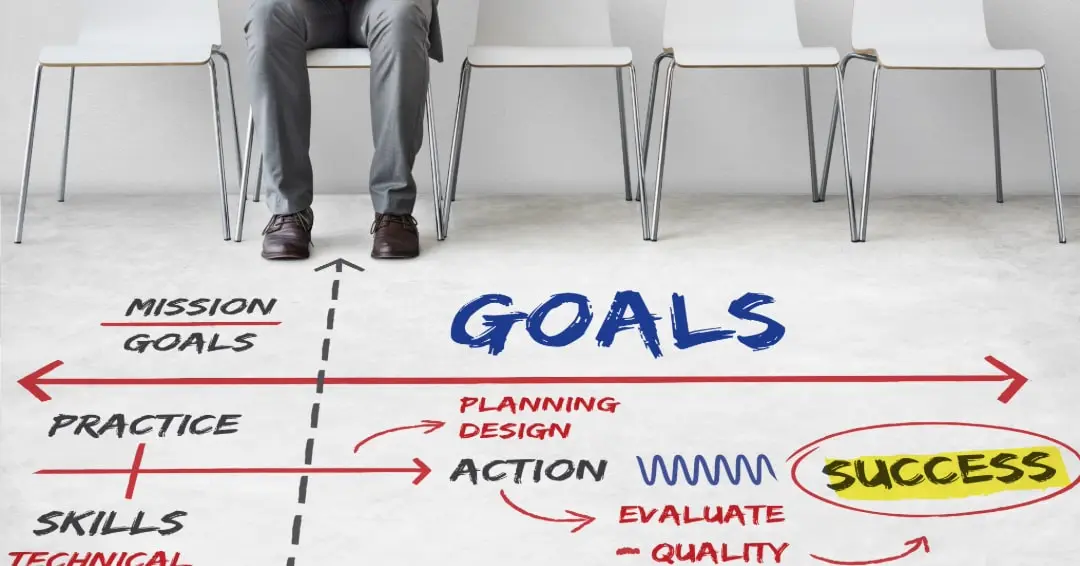The success of any organization hinges on one crucial factor: its people. The role of effective recruitment and selection processes is not just about filling positions. But, they are strategic efforts that can shape the company’s future. Businesses can drive innovation, and achieve their goals with the right talent on board. The key objective behind these processes is finding the best cultural fit to reduce turnover rates. It is necessary to understand these objectives of recruitment. This helps businesses build a strong workforce.
Let’s join us and explore the top 10 objectives of recruitment and selection. It can help your business thrive in today’s competitive landscape!
What is Recruitment?
A process of identifying, attracting, and selecting qualified candidates to fill job vacancies within an organization. It involves various activities. This includes:
- Job postings
- Candidate screening, and
- Interviews
The aim behind this is to find the best fit for both the role and the company culture. For building a strong workforce, effective recruitment is essential. The team that drives business success.
The Importance of Effective Recruitment
Recruitment, to any business seeking survival within the current competitive environment, is imperative. This means getting the appropriate talent on board and therefore has an immediate impact on productivity, innovation, and general performance of that business. This calls for finding talent qualified enough, yet fitting the respective company culture to bring down the rates of turnover as well as provide for a more homogeneous working culture.
A good recruitment process will also heighten the employer’s brand and usher in all the best talents for the company, hence making it a preferable place to work. In the grand scheme of things, effective recruitment basically sets the foundation for long-term success by ensuring that all businesses reach their desired objectives and move up the market demand curve.
Key Components of Recruitment
The following are the key components of recruitment. This helps you understand the whole step-by-step process of recruitment.
Job Analysis:
Understanding the specific requirements of a role is essential. Job analysis involves identifying the skills, qualifications, and responsibilities needed, helping to create clear job descriptions that attract suitable candidates.
Sourcing Candidates:
Sourcing candidates involves identifying where to find potential candidates. The candidates can be found through:
- Job boards
- Social media
- Networking events, or
- Recruitment agencies
A diverse sourcing strategy expands the talent pool and increases the chances of finding the right fit.
Job Posting:
Creating engaging and informative job postings is crucial. A clear description of the role, responsibilities, and qualifications should be included. It also showcases the company culture to attract the right candidate
Screening and Shortlisting:
The screening and shortlisting step involves reviewing applications to identify candidates who meet the minimum qualifications. The applicant tracking system is a screening tool. It can streamline this process effectively.
Interviewing:
Conducting interviews allows employers to assess candidates:
- Skills
- Experiences, and
- Cultural fit.
Employers can utilize various interview formats. This includes behavioral or panel interviews. It can provide a comprehensive view of each candidate.
Assessment and Testing:
Skills assessments or personality tests can help evaluate candidates. This ensures that the selected candidates must have the technical abilities. They should also align with the company’s values.
Reference Checks:
The candidate’s background and previous work experience tell everything. Verification through reference checks provides additional insights. This reflects their work ethic and suitability for the role.
Offer and Negotiation:
Making a job offer is crucial, once a candidate is selected. This step may involve negotiations on:
- Salary
- Benefits, and
- Other terms to ensure both parties are satisfied.
Onboarding:
Effective onboarding helps new hires acclimate to the organization and sets them up for success. A well-structured onboarding process in UAE can improve employee retention and engagement from day one.
Feedback and Continuous Improvement
Gathering feedback from candidates and hiring managers about the recruitment process can identify areas for improvement. Continuous refinement of recruitment strategies ensures that organizations adapt to changing needs and attract top talent effectively.
Objectives of Recruitments
Companies must know the objectives of recruitment. So, that they can apply it effectively. We have discussed some of them in the parts.
Identify and hire the right talent:
The primary objective of recruitment is to find candidates who possess the skills, experience, and cultural fit needed for specific roles. This ensures that the organization has the right people in place to drive success.
Fill vacancies efficiently:
Recruitment at appropriate times does not disrupt the workflow and productivity. It has the opportunity for streamlined recruitment processes. This allows the organization to respond to vacancies without hastening the quality of the employee.
Reduce turnover:
Best recruitment practices will generally translate into a better job match with lower turnover rates. In this respect, through the selection of people who fit the company’s culture and values, organizations can improve retention.
Enhance organizational performance:
Bringing in skilled and competent individuals boosts overall productivity and performance. A strong recruitment process ensures that new hires contribute positively to the organization’s objectives.
Build a strong employer brand:
The positive recruitment experiences will help anchor the organization as an employer of choice. A good employer brand attracts top talent into the organization; apart from that, it improves the reputation of the company in the job market.
Foster diversity and inclusion:
Recruitment objectives include creating a diverse workforce that reflects various backgrounds and perspectives. Emphasizing diversity and inclusion not only enhances creativity but also drives innovation.
Align recruitment with organizational goals:
Recruitment should support the broader strategic objectives of the organization. By aligning hiring practices with long-term goals, companies can ensure they are building the right team to achieve their vision.
What is Selection:
The process of choosing the candidate best suited to fit in an organization. This is known as selection. There are various steps to the selection process. It includes:
- Interviews
- Assessments, and
- Background checks
The purpose behind these processes is to find out which candidate would be suitable for the role.
The Importance of Effective Selection
A good selection process has a direct impact on any organization’s performance, culture, and success. Businesses can make informed hiring decisions. This can be done through careful assessment of candidates. It enhances productivity, reduces turnover, and integrates the team better. A good selection process also protects the organization from potential legal issues. It helps them making costly hiring mistakes.
Key Components of Selection
There are several key components of selection that you must know. For instance, we are going to share a few of them.
Hire the best candidate:
Selection seeks to determine potential people who not only meet the set criteria but also have the capability of delivering high performance. This would ensure that the firm had the appropriate human resources to achieve its needs.
Ensure a good fit:
Selecting the right kind of employees with the correct culture and values within an organization will set up a harmonious working environment. Good cultural alignment enables workers to work in the best way possible and increases employee satisfaction, thus enhancing the dynamics of their team.
Minimize turnover:
Effective selection practices reduce the rate of turnover since new hire trainees are appropriate for their jobs and organization. Stability leads to fewer recruitment costs and experience is achieved by existing employees.
Enhance organizational performance:
By choosing the best candidates, organizations can improve overall performance. Skilled and motivated employees contribute to higher productivity, innovation, and a better bottom line.
Avoid costly mistakes:
A good selection process allows firms to avoid costly errors related to time, resources, and employee morale due to hiring. Effective evaluation minimizes the possibility of inappropriate selections based on unforeseen expectations.
Comply with legal requirements:
Effective selection ensures adherence to employment laws and regulations, reducing the risk of legal disputes. A fair and transparent selection process protects both the organization and the candidates, fostering trust and integrity.
Objectives of Selection
The primary role of selection is the recruitment of the best talent for specific jobs in a company. It does not only talk about the technical qualifications of job applicants but also assesses the compatibility of candidates with the culture of an organization. If the chosen candidate possesses the same value as an organization, it can easily sustain a healthy workplace and even enhance overall teamwork.
This also has the other very important goal of minimizing turnover through better selection. Selection is also carried out in the proper manner, with effective processes that ensure minimal financial waste caused by unsuitable recruits who may even create gaps that hinder organization production and teamwork cohesion. A sound selection process will also ensure the legal status of the organization, avoiding liabilities to the firm. The final aim is to produce the best quality workforce that drives the success and growth of the organization.
10 Key Objectives of Recruitment and Selection

As an employer, you must know about the key objectives of recruitment and selection for your business. Here, we share some that aid you in recruiting and selecting the best candidates.
Attract Top Talent:
Draw high-quality candidates who possess the skills and qualifications needed to excel in their roles. This ensures that the organization remains competitive.
Fill Vacancies Efficiently:
Streamlining the recruitment process helps minimize downtime. It also maintains productivity by quickly filling open positions. Even without sacrificing candidate quality.
Hire the Right Fit:
Candidate selection must be aligned with the company’s culture and foster a harmonious work environment. It enhances teamwork and employee satisfaction.
Reduce Turnover:
Effective recruitment and selection lead to better job matches. It lowers turnover rates and the costs of hiring and training new employees.
Enhance Organizational Performance:
By choosing the right candidates, organizations can improve overall performance and productivity, contributing positively to their goals and objectives of recruitment.
Avoid Costly Mistakes:
A thorough selection process minimizes the risk of hiring errors. It can be expensive in terms of:
- Time
- Resources, and
- Potential disruption to team dynamics.
Foster Diversity and Inclusion:
Recruitment aims to build a diverse workforce. A team that brings a variety of perspectives and ideas. It fosters innovation and creativity within the organization.
Build a Strong Employer Brand:
A positive recruitment experience enhances the organization’s reputation. It attracts more top talent in the future.
Comply with Legal Requirements:
The recruitment and selection processes adhere to employment laws to help mitigate legal risks. It also promotes a fair and equitable hiring environment.
Align with Organizational Strategy:
Recruitment and selection should support the organization’s long-term goals. This ensures that the workforce is equipped to meet future challenges.
Conclusion
In conclusion, effective recruitment and selection are crucial for business success. Focus on the top 10 objectives of recruitment and selection. This entails attracting top talent, ensuring cultural fit, and fostering diversity. This helps organizations in building a strong workforce. The one that drives innovation and performance.
Every objective plays a vital role in filling vacancies. Also, it shapes the overall direction and culture of the company. Investing time and resources into a strategic recruitment process pays off in reduced turnover. This in turn enhanced productivity and a reputation as an employer of choice. Businesses can navigate challenges. They can seize new opportunities on their path to success with the right talent in place. Hire KinzaHR, the best recruitment agency in Dubai, for all your recruitment need









